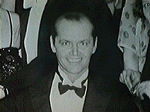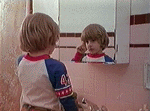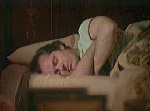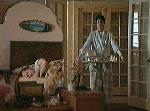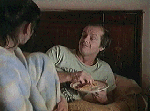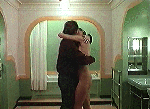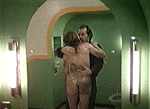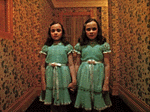|
The Duality Motif by Murray Kraft
The concept of doubles has always had a hold on the collective imagination of mankind. The good twin/evil twin scenario, Jekyll and Hyde, Doppelgangers - there's something inherently disturbing and fascinating about the idea that there can be duplicates of something, or that one thing can be two conflicting entities at once. In The Shining, Stanley Kubrick has tapped into this resonant archetype throughout. The film is replete with doubles and cycles, people existing in two time frames at once as different incarnations, and conflicting personas which are battling for supremacy. Danny Torrance,the young boy who is gifted with a power of extra-sensory perception, manifests this confusing part of his psyche with the persona of Tony. As Kubrick's camera slowly tracks down the hallway of the Torrance's home, we see Danny leaning over the sink, but we cannot see his head. The horror of the moment sinks in when we hear two voices emerging from the bathroom. This is all carried out over the superbly rattling audio track, which sounds like ear-ringing from a head-crushing migraine. We are effectively drawn into Danny's mind. When the camera cuts, we see two Dannies, one looking into the mirror, and the reflection facing us. The camera begins then to track directly into the mirror. It is through this mirror that Danny sees the vivid warnings of doom - the deceased Grady sisters and the spouting blood-filled elevator. It is a wonderfully unsettling sequence early in the film. Jack Torrance certainly has his own conflicting selves to deal with. Initially he appears to be a fairly stable father and husband, but this begins to disintegrate as he approaches the Overlook. This first moment in the film in which it is apparent that Jack has been assimilated into the hotel comes after the 'A Month Later' cut. It is a bizarre, somewhat confusing shot. We see Jack lying in bed, but it isn't until Wendy enters the room and the camera moves back that we realize we were actually watching the mirror image of Jack. Kubrick has subtley tricked us. As Wendy walks in, the camera moves back into the mirror, where we watch Jack muse on his newfound attachment to the Overlook. It's as if he 'knew what was going to be around every corner.' It is a declaration of Jack's emerging shining ability. Like Danny's, it is introduced to us through a reflection. Mirrors play an extremely important role in the character of Jack Torrance. He often seems to be addressing mirrors in lieu of actually communicating with people. This happens in his interaction with Lloyd at the bar, Grady in the bathroom (notice the mirror right behind him), Wendy, and his son. It's fair to say that Jack is very much in his own world, with reality materialized (and presented to the viewer often) through the mirror view. The association between Jack and the mirror continues in the climactic section of the film, when Jack decides to do some remodelling with an axe he found. His rampage is cryptically foreseen by Danny, who repeatedly mutters the word 'redrum' over and over again. Tony reveals the heart of Danny's vision in this altered version, presumably to protect the young mind from the traumatic realization that his father is going to kill his mother. Again, the truth about Jack is revealed in the mirror as Wendy and Danny see the word 'murder' reflected from Danny's lipstick scrawlings. The haunting images of the Grady sisters consistently make themselves seen to Danny Torrance. He first glimpses them, only for a split second, in his first shining moment in the film, as blood pours from the elevator doors. They come to him again as he throws darts in the Overlook on his first day there. Silent, foreboding, and corpse-like, their sunken-in eyes stare lifelessly at Danny in his visions. A good deal of the horror from this famous element of The Shining is directly tied to duality. If the presence of one of these girls would be terrifying enough, two that look exactly the same up the horror ante. There is something unnatural in their symmetry - they are not identical, but very nearly so. In keeping with Kubrick's control over every element of his filmmaking, the choice in not casting identical twins was a brilliant one. They look as if they have been forced to look the same even though at 8 and 10 they are two years apart. For me, this 'forced symmetry' is more disconcerting than a natural one. While in a lustful state of mind Jack encounters another two-sided occupant of the Overlook Hotel. The woman who apparently choked Danny lies waiting for Jack Torrance in the bathtub of room 237. Yet again, we find that appearances can be deceiving, as the beautiful young occupant of the room has her illusion stripped away when Jack looks into the mirror. Once you've been a caretaker,
|
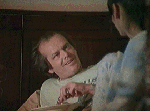
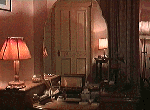 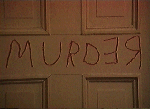 Simply put - This shot perhaps best exemplifies the core of the film. 'Murder' staring back at the viewer from the mirror. 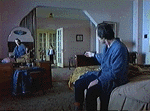 Stuck in the middle with you - Danny is beckoned by two Jacks, the one on the bed and the one in the mirror.
|
